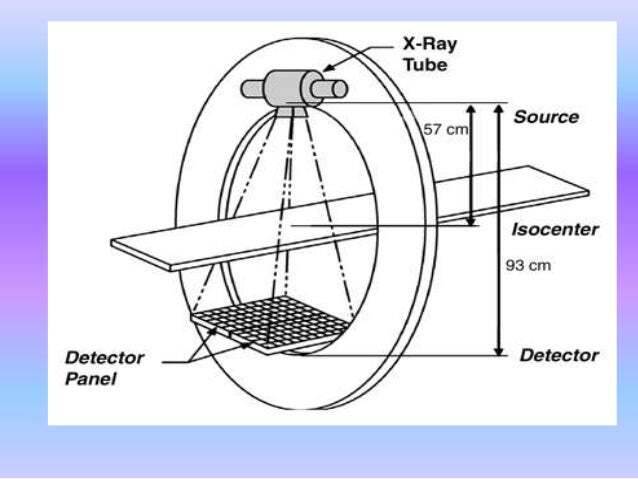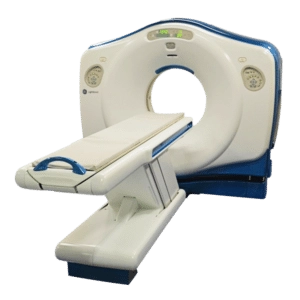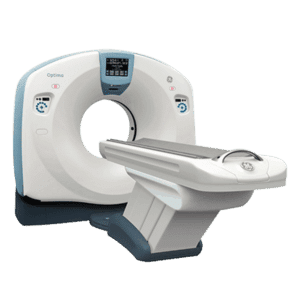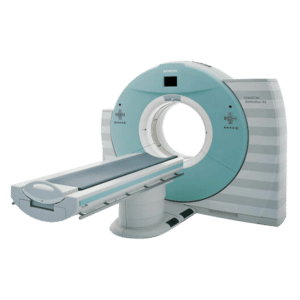Like any piece of machinery, your CT scanner x-ray tube won’t last forever, but should last for quite a long time if maintained properly
Your CT scanner is a vital player in your medical imaging facility. And inside that CT scanner is an x-ray tube that is vital to the performance of your CT system. Like any piece of machinery, x-ray tubes don’t last forever, but should last for quite a long time if maintained properly by x-ray techs. Let’s take a look at some of the ways x-ray techs can extend the life of their CT system x-ray tubes.
Prep Before Use
Following the manufacturer’s recommendations on proper x-ray tube prep is crucial. The x-ray tube should almost always be warmed up before use, unless it has been used within the past 2 hours. By warming up your CT system’s x-ray tube, you’re helping to prevent tube damage due to thermal shock. Normally, warming up the x-ray tube is done by taking several exposures while waiting 30 seconds – 1 minute between them, but varies due to the variety of CT manufacturers. As mentioned above, it’s best to consult your manufacturer’s recommendations on the length of your x-ray tube warm-up.
Avoid Improper Heating and Cooling, Avoid Damage
An incredibly vital part of your CT scanner is its focal track, since even a moderate pitting of the focal track can derail radiation output, by electrons from the filament striking the pitted surface and turning into radiation. This radiation is then absorbed into the surrounding material. A CT scanner produces a great deal of heat during its scan, but the x-ray tube will be able to avoid any focal track wear or damage if you stick to suggested acceptable levels of operation, and by keeping the CT scanner within heat and cooling curves of the x-ray tube you’re avoiding any potential melting to the CT scanner from excessive heat transfer (bearing failure of rotor body damage).

Rotor Operation
Though this varies from CT scanner to CT scanner, monitoring the length of time before the rotor brake cycle begins, as well as avoiding long intervals between spot-films, can help reduce the built up heat generated by the stopping/starting process. Before the next start up sequence, there should generally be a 30-40 second break after the rotor stops. Again, it’s good to see what your specific CT system’s manufacturer recommends on this since every CT system is different.
Get Started
Request Pricing Today!
We’re here to help! Simply fill out the form to tell us a bit about your project. We’ll contact you to set up a conversation so we can discuss how we can best meet your needs. Thank you for considering us!
Great support & services
Save time and energy
Peace of mind
Risk reduction
Filament Boost and Current
If you frequently go over the recommended current (mA), exposure time, and voltage (kVp) specific to each patient’s examination, you are shortening the life of your CT’s x-ray tube. The life of the x-ray tube is shortened due to the high tube current causing an evaporation of the tungsten from the filament, which is then deposited onto the glass envelope. Going the safe route of applying current, voltage, and exposure time as appropriate for each individual scan and not exceeding these recommendations is important, as they can greatly extend filament life.
How do I know if my x-ray tube needs replaced?
- Keep a sharp eye on your x-ray tube, keeping track of what to look for so that you’ll be able to spot a problem if it arises.
- Look for: tungsten build up deposited on the internal surface of the glass tube window. This deposit will reduce the effectiveness of the x-ray tube.
- Oil: If you see oil in/around the x-ray tube, this could indicate issues with bearings, rotor, or tube housing. If you can hear oil being sucked into the tube inset when the tube is turned on, it means you have a punctured tube.
- Cracks: Vacuum conditions could be affected by fractures in the x-ray tube, so be sure to handle the x-ray tube with care.
- X-ray tube gas: If gas is being emitted by your x-ray tube, this is a big trouble sign, as it means your x-ray tube is no longer a vacuum.
Hopefully this post was of value to your CT system operations and the attention given to your CT x-ray tube. With proper care and servicing, your x-ray tube will be working just fine for many years to come. Obviously, however, we’ve just scratched the surface of x-ray tube conditions, so if you have any questions about problem detection, x-ray tubes, or your CT scanner in general,don’t hesitate to contact our dedicated imaging sales experts.



